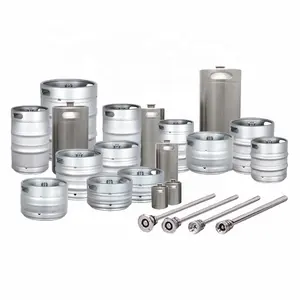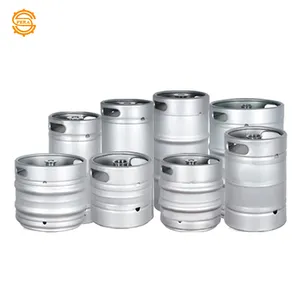Top categories

Packaging Raw Materials

Plastic Packaging

Paper Packaging

Packaging & Printing Services

Logistics Packaging

Glass Packaging

Pharmaceutical Packaging

Metal Packaging

Other Packaging & Printing Products

Textile Packaging

Packaging Auxiliary Materials

Wooden & Bamboo Packaging

Printing Materials
About products and suppliers
Exploring Wine Kegs: A Modern Twist on Traditional Wine Serving
Wine kegs, an innovative solution in the beverage industry, have revolutionized the way wine is stored and served. These containers, designed for the efficient transport, storage, and dispensing of carbonated beverages, are increasingly popular for wines, including prosecco in a keg and champagne kegs. By utilizing pressurized carbon dioxide, wine kegs ensure the preservation of the sparkling qualities of beverages such as sparkling wine keg options and frizzante keg offerings.
Types and Applications of Wine Kegs
Wine kegs come in various sizes to cater to different needs. For personal use, a prosecco keg 5l might be the perfect fit for those who enjoy a glass of chilled draft wine at home. In contrast, establishments like restaurants or bars might opt for larger sizes such as the prosecco keg 20l or even rose kegs, to accommodate higher volume consumption. The versatility of kegs allows them to be an ideal choice for events, with options like the keg of sparkling wine being a centerpiece at celebrations.
Features and Advantages of Utilizing Wine Kegs
The use of wine kegs offers several advantages over traditional wine bottles. Space efficiency is a significant benefit, as kegs reduce the need for extensive storage areas. This space-saving feature is particularly beneficial for venues with limited room, allowing for a more diverse wine list at the keg without the requirement of additional refrigeration equipment. Moreover, kegs contribute to a reduction in packaging waste, aligning with eco-friendly practices by minimizing the carbon footprint associated with wine distribution.
Materials and Sustainability
Constructed from durable materials, wine kegs are designed to withstand the pressures required to maintain carbonation. The robustness of these containers ensures the long-term freshness of the wine, making them a sustainable choice for serving keg champagne and other carbonated wines. The reusability of kegs also plays a crucial role in environmental conservation, as it reduces the need for single-use bottles and cans.
Choosing the Right Wine Keg
Selecting the appropriate wine keg size is essential, depending on the intended use. For those with a penchant for variety, a keg wine list can be expanded with the inclusion of different keg sizes. Mini-kegs are suitable for individuals or small gatherings, while establishments serving a high volume of patrons might find larger kegs more practical. The choice of keg size should reflect the consumption patterns and space considerations of the user.
Integration with Dispensing Equipment
For optimal use, wine kegs can be paired with specialized dispensing equipment such as kegerators. These devices combine the functionality of a refrigerator with a dispensing system, ensuring that wines like keg springs wine are served at the ideal temperature. Kegerators can be custom-fitted with various kegerator kits to accommodate different keg sizes and types, providing a seamless serving experience for a range of carbonated wines.

























 浙公网安备 33010002000092号
浙公网安备 33010002000092号 浙B2-20120091-4
浙B2-20120091-4